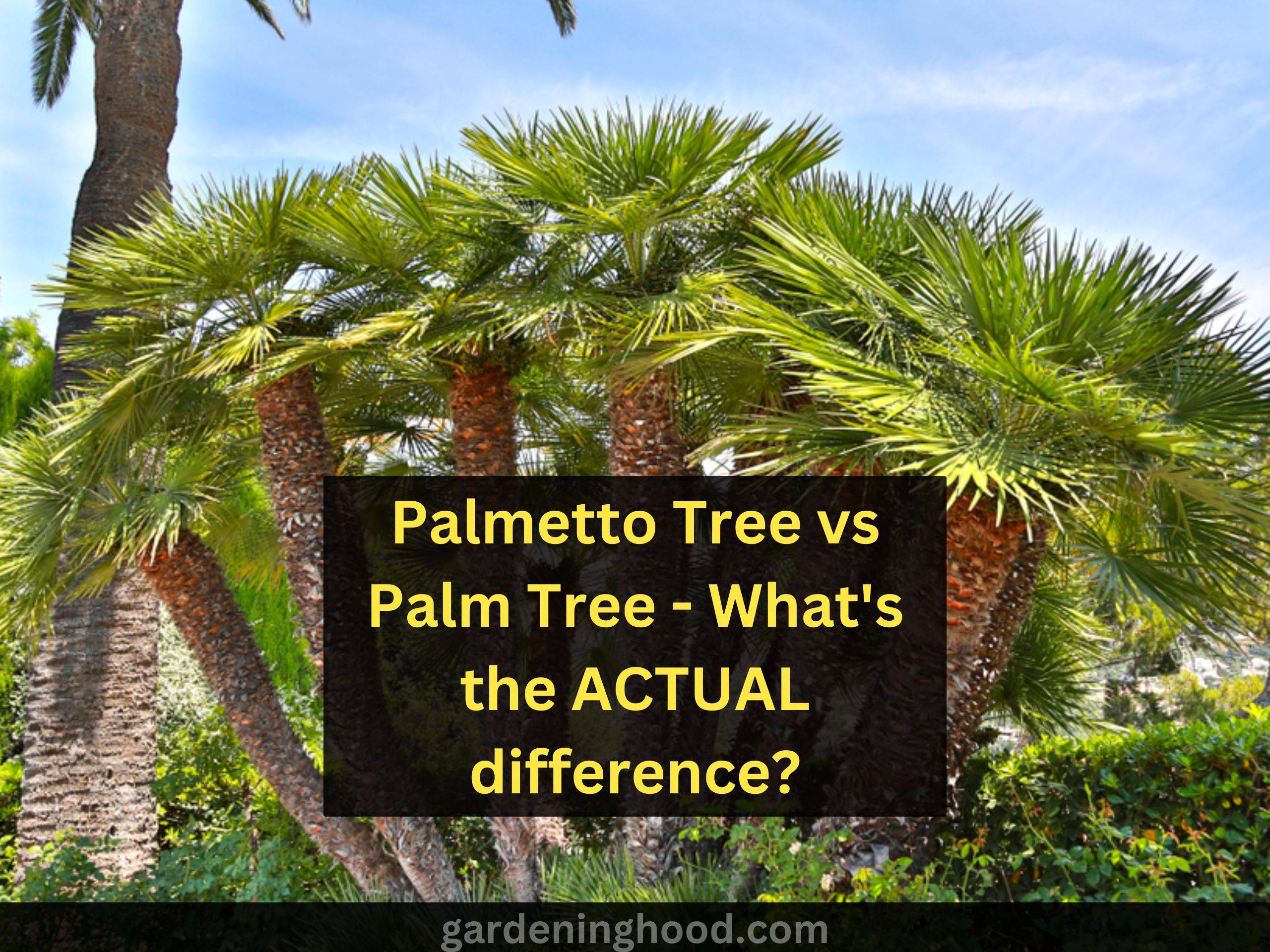15 Palm Trees in Georgia and Atlanta Area (With Pictures)
This article will be all about Palm Trees in Georgia and Atlanta Area. In Georgia, few palm trees grow naturally but that doesn’t mean palm trees cannot be grown here. The summer is not very harsh, rarely the temperature gets to 44 degrees Fahrenheit whereas the winters are mild. The USDA hardiness zone of Georgia is 7 to 8, and the palm trees that are hardy would grow really well in Georgia.
Quick takeaways:
- The palm trees that can grow in Georgia and Atlanta are Saw palmetto, Windmill palm, Dwarf palmetto, Needle palm, Cabbage palm, Queen palm, California fan palm, Pindo palm, True date palm, Sabal palm, Canary Island date palm, Mule palm, Coontie palm, Mexican fan palm, Florida Thatch Palm and Mediterranean fan palm
The palm, if given good care, can be reached to a great height, but it is difficult to grow them to that tall as they grow in Florida. Let’s look at the palm trees that can be grown in the Georgia and Atlanta area.
15 Palm Trees in Georgia and Atlanta Area (With Pictures)
1. Cabbage palm
- Scientific name: Sabal palmetto sp.
- Family: Arecaceae
- Height: 80-100 feet
- Trunk diameter: 18 inches
- It is a type of palmetto palm.
The palm tree is also known as the sabal palm. Leaves are fan-shaped about 3 to 4 inches long and have curved edges. The flowers are produced in large amounts that are small in size in cream color. The flowers have a sweet aroma that attracts many pollinators.
2. Windmill palm
- Scientific name: Trachycarpus fortunei
- Family: Arecaceae
- Height: 10-40 feet
- Trunk diameter: 8 to 10 inches
One of the coldest hardy palms that can withstand the cold of Georgia is the windmill palm. These palm trees can tolerate very low temperatures in Atlanta and Georgia too. The leaves are fan-like and straight. The leaves have a hairy covering.
The windmill pal needs full sun to partial sunlight. The palm grows at a little slower pace and is drought tolerant. These palms yield yellow-colored flowers that later turn into fruits.
3. Needle palm
- Scientific name: Rhapidophyllum hysterix
- Family: Arecaceae
- Height: 8 feet
- Trunk diameter: 6-7 inches
- Flowers: flowers are tiny red colors that appear after fleshy dupes
- Leaves: green to dark green, sharp and glossy leaves
These are dwarf palm trees and are naturally growing in Georgia and Atlanta. The palm trees are round and tolerate very low temperatures too. These needle palms are slow-growing ones.
4. Saw palmetto
- Scientific name: Serenoa repens
- Family: Arecaceae
- Height: 5-10 feet
- Trunk diameter: clumpy, multi-trunked, 20 feet
- Flowers: clusters of tiny white flowers
- Leaves: fan-shaped leaves
The saw palmetto is another naturally growing palm tree in Georgia and Atlanta. The palm trees live for a long time, even for a hundred years . The saw palmetto are not tall and are among dwarf palm trees. They are drought-tolerant and grow in full sun.
5. Sabal minor
- Scientific name: Dwarf palmetto
- Family: Arecaceae
- Height: 2-10 feet
- Trunk diameter: trunkless
- Flowers: creamy white with string fragrance
- Leaves: the leaves arise from the underground tissue and are fan-like, lacking ribs.
The dwarf palmetto plants are evergreen, small-sized palm trees that either has a short trunk or no trunk at all. The palm trees can tolerate zero degrees Fahrenheit as well. They grow at a small pace. And are wind-tolerant palm trees.
6. Mediterranean farm palm
- Scientific name: Chamaerops humilis
- Family: Arecaceae
- Height: 15 feet
- Trunk diameter: 7-12 inches
- Flowers: yellow flowers or orange flowers
- Leaves: palmate compound, triangular leaves
The Mediterranean farm palm trees have silverfish green-colored leaves. Though many times the leaves are solely green-colored. These palms have high durability. They are very attractive palms that are hardy and can adapt to temperature fluctuations.
7. Queen Palm
- Scientific name: Syagrus romanzoffiana
- Family: Arecaceae
- Height: 50 feet
- Trunk diameter: 8-15 inches
- Flowers: hanging clusters of yellow-cream-colored flowers
- Fruits: round orange-colored fruits
Leaves: the leaves are feathered, and have an elegant arching pattern. The leaves of these trees are called fronds. The leaves form a great crown at the top of trees.
The queen palms are not that tall, have a single trunk, and are fast-growing palm trees. The other name for queen palm trees is cocos trees. They give elegance to the streets and boulevards.
8. California fan palm
- Scientific name: Washingtonia filifera
- Family: Arecaceae
- Height: 30-80 feet
- Trunk diameter: 2-3 feet
- Flowers: white to yellow colored flowers that usually appear during the spring season.
- Leaves: the leaves are glossy with a waxy surface that is fan-shaped. Leaves are round and later turn brown in color
- Fruits: elliptical berry-like fruits of black color
These are flowering varieties of palm and have an unbranched trunk that is grey-colored with fissures on it. They are also called desert fan palms. The loamy soil is what they need and is partial to full sun.
9. Coontie palm
- Scientific name: Zamia intergrifolia
- Family: Zamiaceae
- Height: 1-3 feet
- Trunk diameter: half inches wide and 1-2 inches tall
- Leaves: leaves are stiff, evergreen like most palms, and featherlike
- Flowers: no flowers
- Fruits: no fruits
The coontie palm is actually a cycad that has poisonous roots and is slow growing in nature. They look like small ferns and are evergreen that is small in size. They like sandy loamy soil and thrive well in full to partial sun.
10. Mexican fan palm
- Scientific name: Washingtonia robusta
- Family: Arecaceae
- Height: 70-100 feet
- Trunk diameter: thick at the bottom and thin at the top
- Leaves: fan-shaped leaves, leaves are wide and dark greenish in color
- Flowers: small creamy flowers in bunches have a light scent
These palm trees have upright branches and they are fast-growing palms. They are tall evergreen palms that love soil that has acidic or neutral pH. The Mexican fan palm has spiky stems. These palms have an invasive nature which is an exception over here.
11. Pindo palm
- Scientific name: Butia capitata
- Family: Arecaceae
- Height: 15-20 feet
- Trunk diameter: 1-1.5 feet
- Flowers: Flowers are small-sized and are yellow to orange-red colored
- Fruits: fruits are about one inch long and have a sweet-tart flavor full of juice
Pindo palms are also known as jelly palms that grow at a slow speed. The Pindo palm trees have a crown with arching fronds. They are hardy and feather-like palm trees. They firm great landscapes as they are medium-sized.
12. Mule palm
- Scientific name: X Butiagrus nabonnandii
- Hybrid of Pindo palm and queen palm
- Height: 15-30 feet
- Trunk diameter: 4 inches
- Flowers: the flowers are pink colored
- Leaves: pinnate type
The mule palm is an expensive palm and rare in type. These can tolerate very cold temperatures and are beautiful-looking palms.
13. True date palm
- Scientific name: Phoenix dactylifera
- Family: Arecaceae
- Height: 100 feet
- Trunk diameter: 18 inches
- Flowers: white or yellow colored
- Leaves: leaves come in colors like green, or bluish-gray that are pinnated and feather-like
- Fruits: fruits appear when they are 8 years old which is mid-age. The fruits are green dates in the beginning that change color to orange or brown.
- These palms grow well in full sun and are easy to maintain and need little care.
14. Canary Island date palm
- Scientific name: Phoenix canariensis
- Family: Arecaceae
- Height: 65 feet
- Trunk diameter: 3-4 feet
- Flowers: yellow-colored small size flowers
- Leaves: long arching leaves that are bushy
- Fruits: fruits are date and are edible, flesh is real and is very small in size
The canary island palm trees have stout trunks and leaves that form a crown on top and are green in color. These palm trees need full sun and are extremely beautiful-looking palm trees. This palm is the largest of most palms.
15. Chinese fan palm
- Scientific name: Livistona Chinensis
- Family: Arecaceae
- Height: 30 feet
- Trunk diameter: 18 inches
- Flowers: flowers are bisexual, and are yellow-cream in color.
- Leaves: leaves grow towards the source of light, and are fan-like.
The Chinese fan palm loves humid areas that have warm temperatures. They are great landscape plants. They are hardy and drought-tolerant. They are also known as fountain palms due to their appearance.


